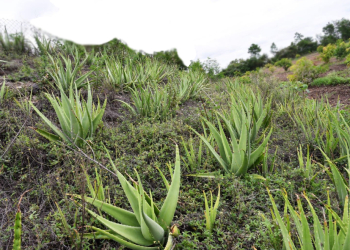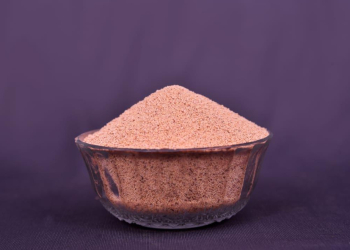Description
What is Aloevera?
There have been many health conditions that have been treated with aloe vera for thousands of years. Additionally, vera gel can be bought in gel form or can be taken directly from the plant.
There is a clear gel found in aloe vera leaves that is a component of aloe vera creams, gels, and ointments. Various skin conditions can be treated with these products topically. To promote health and well-being, aloe is available as capsules or liquids for internal consumption.
Plant
It is botanically known as Aloe barbadensis miller, but it is also called aloe vera. It is a perennial, xerophytic, succulent plant of the Asphodelaceae (Liliaceae) family. This plant grows primarily in the dry regions of Africa, Asia, Europe, and America. Tamil Nadu, Gujarat, Maharashtra, Rajasthan, and Andhra Pradesh are among the Indian states where it grows.
Physiology
Plants with this species have triangular, fleshy leaves with serrated edges, yellow tubular flowers, and numerous seeds in their fruits. Glucomannans, amino acids, lipids, sterols, and vitamins make up the rest of the leaf’s interior. Anthraquinones and glycosides are found in the middle layer of latex. In addition to its protective function, the rind synthesizes carbohydrates and proteins. Xylem (water) and phloem (starch) are transported through vascular bundles within the rind.
There have been many health conditions that have been treated with aloevera for thousands of years.
Advantages :
- Various skin conditions can be treated with these products topically.
- To promote health and well being aloe is available as capsules or liquids for internal consumption.
- It has antioxidant and antibacterial properties.
- It may improve skin and prevent wrinkles.
Applications :
- aloe vera juice can reduce the symptoms of heartburn without any uncomfortable side effects.
- Aloe vera juice may be a potential treatment for irritable bowel syndrome (IBS).
- Aloe vera juice is a rich source of antioxidants, which help fight free
Limitations :
- Adverse clinical effects of the whole leaf extract in humans. Topical and oral use of Aloe vera can cause skin irritation, hives, cramping, and diarrhea to those who are allergic to other plants in the lily family.
- Topical aloe vera might irritate your skin. Oral aloe vera, which has a laxative effect, can cause cramping and diarrhea. This may cause electrolyte imbalances in the blood of people who ingest aloe vera for more than a few days.
- If you take any drugs regularly, talk to your doctor before you start using aloe vera. They could interact with medicines and supplements like diabetes drugs, laxatives, and licorice root. The oral use of aloe vera gel may also block the absorption of medicines taken at the same time.
Plant:
Plants with the species have triangular fleshy leaves with serrated edges, yellow tubular flowers, and numerous seeds in their fruits. Glucomannans , amino acids, lipids , sterols and vitamins make up the rest of the leafs interior. Anthraquinones and glycosides are found in the middle layer of latex in addition to its protective function, the rind synthesizes carbohydrates and proteins . xylem and phloem are transported through vascular bundles within the rind.



Reviews
There are no reviews yet.